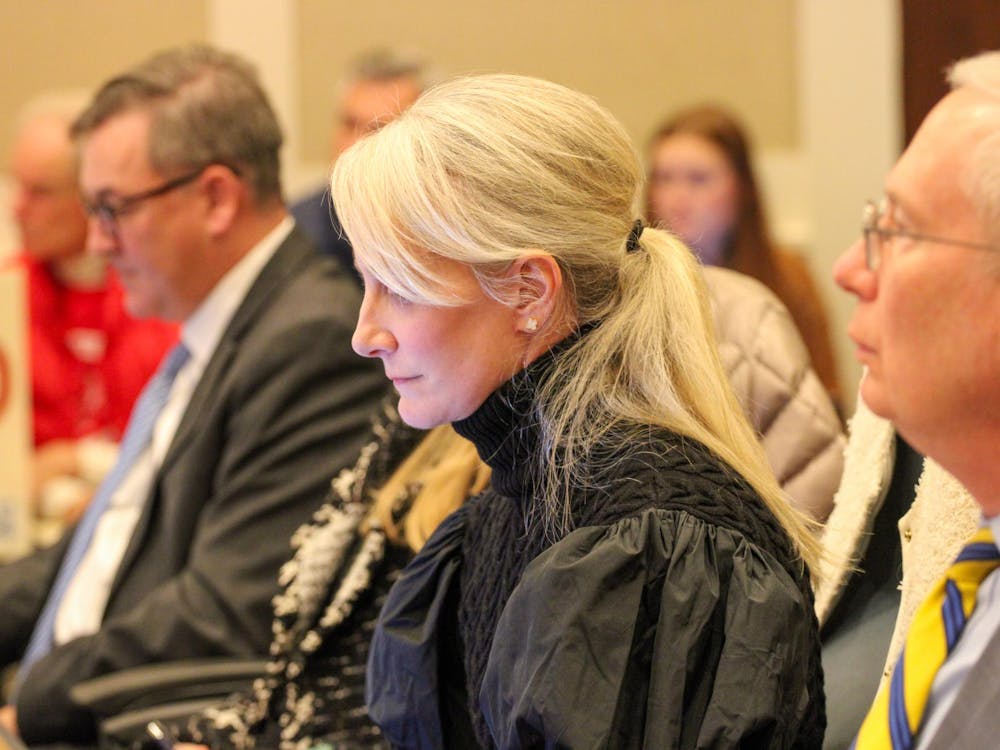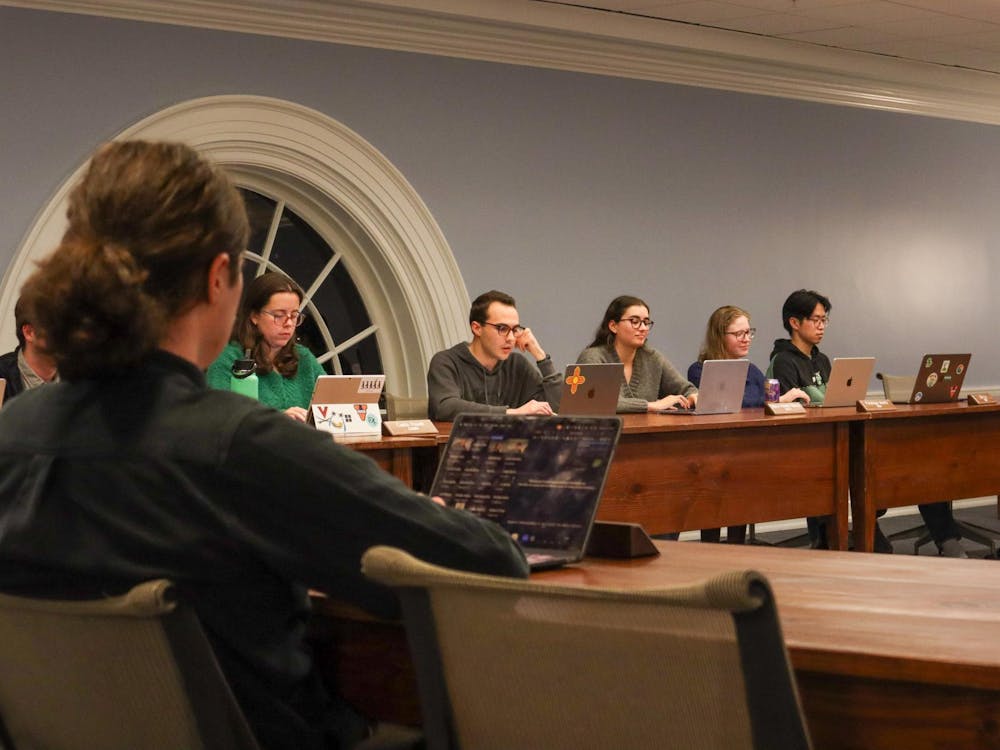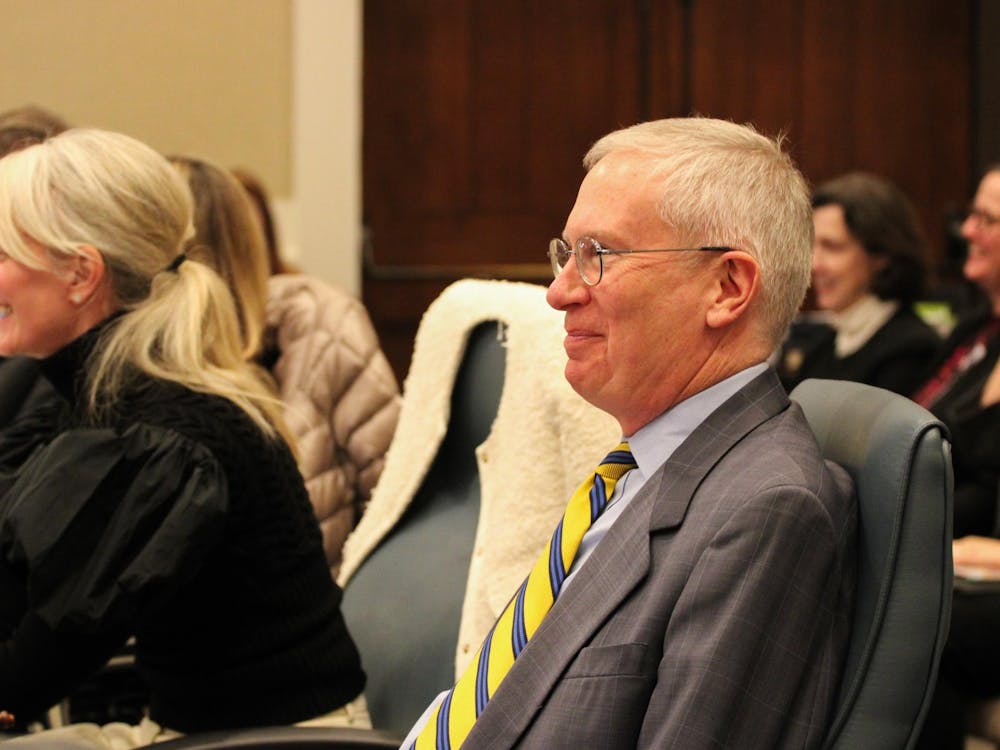It's not too often that professors let an undergraduate student miss school for three-and-a-half weeks to go on a trip, but in Lynnette Sobehart's case, her professors had to make an exception.
On Feb. 25, Sobehart, a fourth-year recipient of the David A. Harrison III Undergraduate Research Award, along with a team of about 40 scientists, six University students and two faculty members, will head to the wilds of the South African savanna to study changes in climate and vegetation.
The trip is the sequel to a 1992 research project that studied how African air and soil are affected by the traditional - and potentially environmentally dangerous - practice of crop burning.
The SAFARI 2000 initiative - short for South African Atmospheric Initiative - involves the combined effort of scientists from around the globe to understand the relationships between the physical, chemical, and biological processes that make up the South African ecosystem.
|
Sobehart and her scientific buddies have the opportunity to uncover information that could have global ramifications.
A decade of destruction
The story begins almost 10 years ago in southern Africa countries of Botswana, Zambia, Namibia, South Africa, Zimbabwe and Mozambique, where the crop-burning practice abounded. Farmers thought burning unwanted crops would fertilize the soil and efficiently clear the land for other uses.
When environmental scientists noticed that almost half of the world's aerosols - dust particles with a diameter of less than a micron - came from this area, they were concerned that the gas and particles from the intentional fires would affect surrounding ecosystems. Aerosols such as smoke are harmful to the environment because they can prevent sunlight from reaching the earth and possibly cause global warming.
As a result, a team including Environmental Science Prof. Robert Swap set out in 1992 to study the effects the fires had on the natural materials that were burned.
But even after the team returned, Swap said the project left unanswered questions.
The solution: further study in 2000 - the same study in which Sobehart will participate.
"We're trying to complete the loop, to kind of sew it all together after studying fire emissions," said Kelly Caylor, a graduate student who will participate in the trip.
The researchers will conduct six types of research while in the savannas - studies detailing clouds and radiation, aerosols, terrestrial ecology, trace gases, land cover, land use change and integrated modeling.
Changing theories
The group's vegetation experiments have the potential to change classical theories of ecology.
Environmental Sciences Prof. Michael Garstang, who has been doing research in Africa for years, questions the classically-held view that plants do not affect their environment and said the trip has great research potential.
For years, ecologists had accepted the view that climate affected the types of vegetation that appeared on the ground. But Garstang hypothesized that the reverse could be true - plants could affect the overall climate in some way.
"The point we're making here is that it's not that simple. It's not a one-way street. Plants can either affect the climate [or] it can be the other way around," he said.
Caylor will be studying the growth and spatial distribution of vegetation in the Kalahari Transect in Botswana and Zambia along with Sobehart and Global Environmental Change Program research associate Pete Dowty. These areas are in the same vicinity yet they varied greatly in average rainfall. By studying systems with abundant to almost no rainfall they can note the effects of burning on the different types of vegetation found in the different climates.
"All this data that's being collected, they're trying to understand how savanna ecosystems work. And maybe we will have a computer model to do policy planning, so the governments will know about the issues about land use and over-grazing," Sobehart said.
Space-age technology
The initiative will be coordinated with NASA, which has launched a satellite called TERRA to observe the land cover and authenticate their imagery.
"We're trying to get to a point where we can have predictive ability with the satellites. They see what's going on in an overall scale. We'll try to bridge the gap by seeing everything on land," Caylor said.
The TERRA satellite is unique to the SAFARI 2000 project because this will be the first time images will be taken overhead for the initiative. In addition, TERRA's five measuring instruments contain four tools that never before have been used in space. During the trip, the timed instruments will fly over the region and take images of natural materials such as aerosol, cloud cover and vegetation distribution.
"The hope is that someday we can know when to rely on the satellite imagery and when to not," NASA Budget Manager Jack Kaye said.
The SAFARI project also will make use of former U2 spy planes that have been transformed into environmental observation aircraft.
Using these instruments for the project not only allows NASA the prime opportunity to assure that their observations in space are accurate; it also will be very advantageous for scientists back on earth.
"You can't drive a truck over every single inch of land, but you can fly over it," said Bob Swap.
"To really know what's going on, we need to have the capability of satellite and remote sensing. Then when we get that data, we can try to mesh with NASA on a much larger scale," Caylor added.
In addition to the technology that NASA is providing land researchers, the government organization also is providing most of the funding for this trip.
"We don't have sugar daddies to draw from here. We don't have the kind of money for the airplanes and other research materials. Since we saw a mutual interest with NASA in this project, we brought the two divisions together so we could both get something out of it," Swap said.
The instruments on the satellite will provide crucial information for projects like those managed by Robert Curran. TERRA will observe aerosol concentrations over the region while researchers on land measure haze in the atmosphere.
Curran, NASA program manager of the radiation science department, said there are several different types of aerosol and that the differences may affect the land they cover in different ways.
"One of the key questions we're asking is, 'How well do these particles reflect light?' If they are white they are better at reflecting heat back into space. There is a strong source of particles in Africa but we're finding that they're darker than we expected in the U.S.," Curran said. This may hint that lighter-colored aerosols, which are the types being produced from African fires, may not be as harmful as the pollution-produced dark aerosols in the United States.
The big picture
The team chose southern Africa as their area of study for economic, political and scientific reasons.
"Africa is unique in the sense that it's equidistant from the equator. It's extremely optimal in terms of atmosphere," Garstang said.
Africa also is interesting in terms of politics. After wars ravaged the African landscape, the migration of people over national borders had an adverse impact on the environment.
"We're not telling the governments what to do. But now that war has decreased in several regions of Africa many will be asking how are they getting back on their feet? We're just providing information for the decision makers," Swap said.






